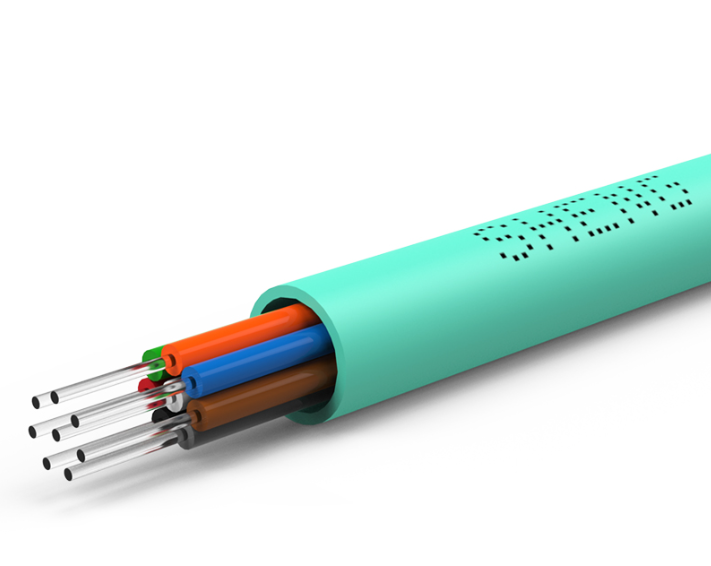Fiber Optic Knowledge | The history and characteristics of fiber optic communication
In 1880, Alexander Graham Bell invented the "optical telephone".
In 1887, British scientist Charles Vernon Boys pulled out the first optical fiber in his laboratory.
In 1938, Owens Illinois Glass Company and Nitto Spun Performance Company of Japan began producing long glass fibers.
In 1951, photophysicist Brian O'Brian introduced the concept of cladding.
In 1956, a student at the University of Michigan made the first glass-clad fiber by melting a low-refractive-index glass tube onto a high-refractive-index glass rod.
In 1960, Theodore Maiman demonstrated the first laser to people. This ignited an interest in optical communication, and lasers looked like a promising way to communicate and solve the transmission bandwidth problem, and many laboratories began experiments.
In 1966, the British-Chinese scholar Charles Kao pointed out the possibility and technical way of using optical fiber for information transmission, laying the foundation of modern optical communication - fiber optic communication.
In 1970, the U.S. Corning (Corning) company developed a loss of 20dB/km quartz fiber.
In 1973, the United States Bell (Bell) Laboratory achieved greater success, fiber loss reduced to 2.5dB/km.
In 1976, Japan Telegraph and Telephone (NTT) company to reduce the loss of optical fiber to 0.47 dB/km (wavelength 1.2μm).
Features of fiber optic communication
Huge communication capacity
Theoretically, an optical fiber can transmit 10 billion voice paths at the same time, and the current test of simultaneous transmission of 500,000 voice paths has been successful, thousands or even hundreds of thousands of times higher than the traditional coaxial cable, microwave, etc.
Long relay distance
Fiber optic has a very low attenuation coefficient, with appropriate optical transmission, optical reception equipment, optical amplifiers, forward error correction and RZ code modulation technology, etc., can make its relay distance of thousands of kilometers or more, while the traditional cable can only transmit 1.5km, microwave 50km, simply can not be compared with it.
Good secrecy performance
Strong adaptability
Not afraid of external strong electromagnetic field interference, corrosion resistance and other advantages
Small size and light weight
Rich source of raw materials and low price

Structure of the fiber
The typical structure of optical fiber is multi-layer coaxial cylinder, mainly composed of fiber core, cladding layer and coating layer.

Fiber core
It is located in the center of the fiber, and the composition is high purity silicon dioxide, with a very small amount of dopant. The refractive index of the core is slightly higher than that of the cladding, and the loss is lower than that of the cladding, so that the optical energy is mainly transmitted within the core.
Cladding
The cladding is located around the core and is also composed of high-purity silica with a very small amount of dopant. The cladding layer provides a reflective surface and optical isolation for light transmission, and plays a certain role in mechanical protection.
Coating layer
The outermost layer of the fiber, consisting of acrylate, silicone rubber and nylon. The coating layer protects the fiber from water vapor and mechanical abrasion.
In 1880, Alexander Graham Bell invented the "optical telephone".
In 1887, British scientist Charles Vernon Boys pulled out the first optical fiber in his laboratory.
In 1938, Owens Illinois Glass Company and Nitto Spun Performance Company of Japan began producing long glass fibers.
In 1951, photophysicist Brian O'Brian introduced the concept of cladding.
In 1956, a student at the University of Michigan made the first glass-clad fiber by melting a low-refractive-index glass tube onto a high-refractive-index glass rod.
In 1960, Theodore Maiman demonstrated the first laser to people. This ignited an interest in optical communication, and lasers looked like a promising way to communicate and solve the transmission bandwidth problem, and many laboratories began experiments.
In 1966, the British-Chinese scholar Charles Kao pointed out the possibility and technical way of using optical fiber for information transmission, laying the foundation of modern optical communication - fiber optic communication.
In 1970, the U.S. Corning (Corning) company developed a loss of 20dB/km quartz fiber.
In 1973, the United States Bell (Bell) Laboratory achieved greater success, fiber loss reduced to 2.5dB/km.
In 1976, Japan Telegraph and Telephone (NTT) company to reduce the loss of optical fiber to 0.47 dB/km (wavelength 1.2μm).
Features of fiber optic communication
Huge communication capacity
Theoretically, an optical fiber can transmit 10 billion voice paths at the same time, and the current test of simultaneous transmission of 500,000 voice paths has been successful, thousands or even hundreds of thousands of times higher than the traditional coaxial cable, microwave, etc.
Long relay distance
Fiber optic has a very low attenuation coefficient, with appropriate optical transmission, optical reception equipment, optical amplifiers, forward error correction and RZ code modulation technology, etc., can make its relay distance of thousands of kilometers or more, while the traditional cable can only transmit 1.5km, microwave 50km, simply can not be compared with it.
Good secrecy performance
Strong adaptability
Not afraid of external strong electromagnetic field interference, corrosion resistance and other advantages
Small size and light weight
Rich source of raw materials and low price

Structure of the fiber
The typical structure of optical fiber is multi-layer coaxial cylinder, mainly composed of fiber core, cladding layer and coating layer.

Fiber core
It is located in the center of the fiber, and the composition is high purity silicon dioxide, with a very small amount of dopant. The refractive index of the core is slightly higher than that of the cladding, and the loss is lower than that of the cladding, so that the optical energy is mainly transmitted within the core.
Cladding
The cladding is located around the core and is also composed of high-purity silica with a very small amount of dopant. The cladding layer provides a reflective surface and optical isolation for light transmission, and plays a certain role in mechanical protection.
Coating layer
The outermost layer of the fiber, consisting of acrylate, silicone rubber and nylon. The coating layer protects the fiber from water vapor and mechanical abrasion.







